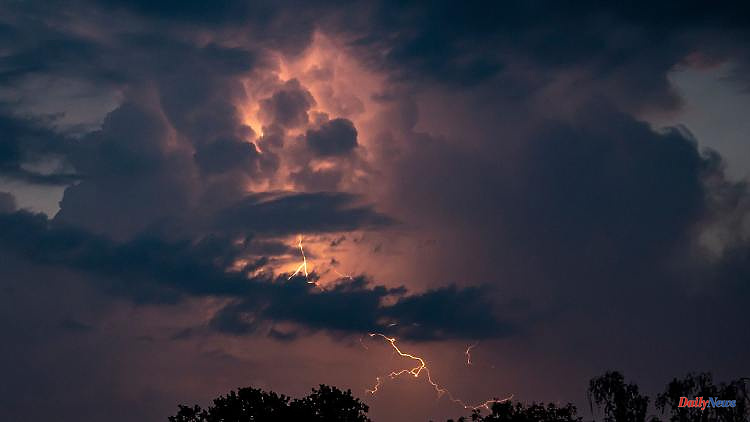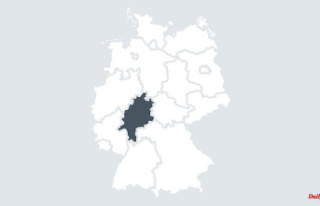Nowhere in Germany did lightning strike so often per square kilometer last year as in the district of Starnberg. More than half of all lightning strikes have occurred within a single month.
Munich (dpa / lby) - Lightning strikes particularly often in Bavarian cities and districts. The district of Starnberg leads the nationwide ranking in the Siemens Lightning Atlas 2021 published on Monday with 7.6 lightning strikes per square kilometer by a clear margin. And almost all of the other twelve counties or cities with the most flashes are in Bavaria. Only the Baden-Württemberg Bodenseekreis district - behind Augsburg (5.9) in third place - is pushing into the Bavarian phalanx.
The independent city of Kaufbeuren and the district of Weilheim-Schongau follow in the next ranks with 5.7, the city of Kempten with 5.6 and the districts of Landsberg and Munich with 4.8 and 4.7 flashes per square kilometer respectively. The city of Landshut and the district of Bad Tölz-Wolfratshausen achieved 4.6 ahead of the city of Munich and the district of Aichach-Friedberg with 4.4.
At the state level, Bavaria only ranks second among the lightning hotspots behind Baden-Württemberg with a lightning density of 2.61. Across Bavaria there are 2.18 flashes per square kilometer, the national average was 1.4 flashes per square kilometer. This is roughly the average for the past ten years.
A few areas - mostly in the northern half of the Free State - where there was hardly any lightning have a braking effect on the Bavarian values. There were only eleven flashes in Schweinfurt city - 0.31 per square kilometer. In Amberg Stadt it was 0.34 per square kilometer, in Schwandorf 0.42
Across Germany, the number of lightning strikes rose by almost a quarter to around 491,000 last year. Every eleventh of them struck on June 29th, the most lightning day in Germany. At that time, storms had caused severe damage in parts of the Federal Republic. Overall, more than half of all lightning strikes last year in June.
"Compared to previous years, 2021 was again significantly rainier, but temperatures were still high, especially in June," explains Stephan Thern, head of Siemens' lightning information service. "So the basic requirements for thunderstorms - moisture and hot temperatures - were in place to register a significantly more lightning-intensive year."
There were a total of 43 thunderstorm days in the Starnberg lightning hotspot, says Thern. He is not surprised that the highest lightning densities were measured in the south: "In the case of the predominantly Bavarian urban and rural districts among the top 10, the proximity to the edge of the Alps certainly plays a major role - as almost every year."
In a European comparison, Germany, with its 1.4 lightning strikes per square kilometer, ranks 18th out of 43 countries. The highest lightning densities last year were in Bosnia-Herzegovina, Slovenia and Montenegro. The lowest in Ireland, Norway and the UK.
The lightning is measured with the help of around 160 interconnected measuring stations in Europe. Although there are up to 350 kilometers between the sensors, the lightning strikes can be determined with an accuracy of up to 50 meters.












